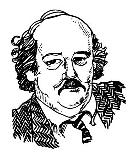(Syndicated to Kansas newspapers June 1, 2015)
 Us Statehouse insiders, who don’t start to tan until the 4th of July and are fascinated by little political gimmicks that most regular people don’t notice are…well, fascinated again.
Us Statehouse insiders, who don’t start to tan until the 4th of July and are fascinated by little political gimmicks that most regular people don’t notice are…well, fascinated again.
This time, it is Gov. Sam Brownback’s new tax plan, the one that raises more than $400 million in taxes for the state budget without inconveniencing those 330,000 Kansans who make their livings by owning certain types of businesses.
That lucky 330,000 make their livings by receiving “non-wage” income from Limited Liability Corporations, subchapter S corporations or are owner-operators of their businesses which since 2012 have been exempt from Kansas income taxes. They like it like that.
But with the budget deficit staring lawmakers in the face, and a governor who has been…a dab irrelevant in the tax-raising business this year, Brownback has come up with a plan that—good or bad—is politically fascinating.
Because this is being written before we know whether the plan is adopted or not, let’s just look at its themes.
The concept, stripped to its bones, is to raise the sales tax by half a cent on everything you can buy at retail in Kansas, plus 50 cents a pack for cigarettes—and eliminate Kansas individual income tax on about 388,000 low-income Kansans.
Political junkies can read the House and Senate reelection campaign ads already: “XXX voted to eliminate income taxes on low-income Kansans.” Does it get any better than that for a reelection campaign? Lower taxes on the poor? Almost, but doesn’t quite, bring a lump to your throat.
Or… “XXX voted to make poor people continue to pay state income taxes,” or “wouldn’t cut taxes for the poor.” Is there a candidate who wants that headline on a postcard along with a nice photo of the candidate and his/her name and party affiliation? Didn’t think so.
Now, that Brownback plan also raises the sales tax by half a cent, from 6.15% to 6.65%, but that’s not going to be noticed much by middle- and higher-income taxpayers because it’s not much of an increase, and the wealthier of Kansans spend a lower percentage of their money on food and diapers for the baby. There is no sales tax on stocks and bonds.
Now, those low-income folks who spend most of their money on food and necessities may notice that half-percent increase; the governor can say “you’re saving on that pesky income tax, so it probably equals out.”
Statisticians, or those with calculators and a little time, figure the low-income tax cut costs the state $19 million in lost revenue in the upcoming fiscal year, an average of about $48 for each of those 388,000 Kansans who won’t owe income taxes if the plan is OK’d. That $48 covers the half-cent sales tax increase (which raises about $234 million in total) for about $9,600 in purchases.
Not sure whether those who qualify for the income tax elimination which exempts from taxation the first $5,000 of income of single filers, $10,500 of single-head-of-household filers and $12,500 for joint filers, spend less than $9,600 on food and stuff which carries a sales tax. Some might, some might not.
Politically…do you vote to cut income taxes for the relatively poor, while boosting their sales taxes, along with everyone else’s? Do you use the income tax cut as a diversion so the sales tax can be raised to protect the tax exemptions for those LLC folks? Or, do you spend time explaining to the relatively poor—and no, we don’t know their party affiliations, House and Senate districts, just the counties in which they live—that they are just a diversion so those LLC folk don’t get bothered with taxes especially in the spring when they might be shopping for new boats or negotiating for lawn service?
The whole tax plan can be stretched so many ways; whether it is good public policy or not almost fades away for some politics watchers awaiting it to be used for campaigning.
And, yes, we’re thinking someone ought to get up a support group for those folks…
